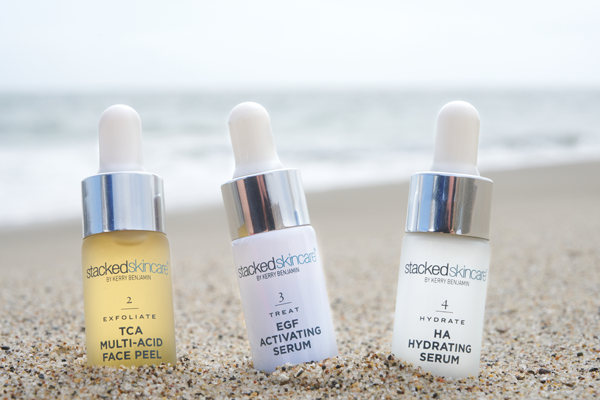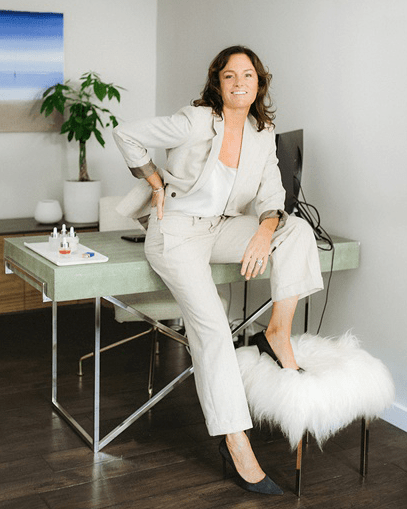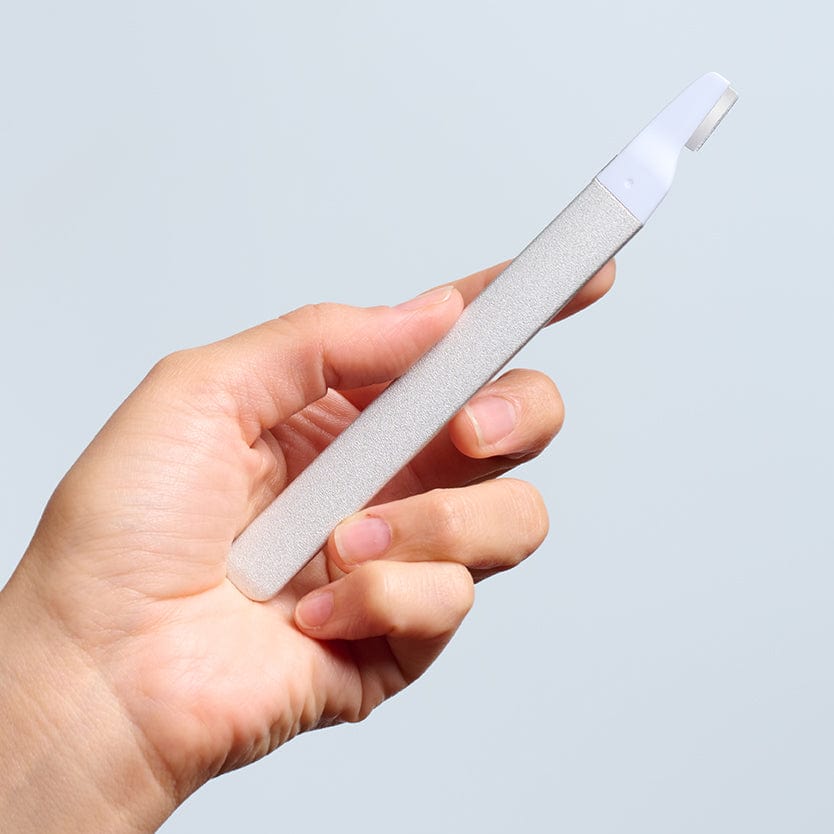How to Treat Sebaceous Hyperplasia
Written by Kerry Benjamin

Whiteheads and other forms of acne are some of the more common causes for bumpy skin. But if you have bumps with an indented center that just won’t go away, you might not be dealing with acne after all. Sebaceous hyperplasia is a skin condition that can look very similar to acne: fleshy clusters of white or yellowish bumps that appear on the forehead, cheeks, and nose. While SH isn’t painful or dangerous, it can be hard to treat. Let’s take a look at what causes sebaceous hyperplasia, how to identify it, and what you can do to smooth it out.
WHAT IS SEBACEOUS HYPERPLASIA?
Sebaceous hyperplasia occurs when the skin produces too much oil, also known as sebum. The skin contains tiny sebaceous glands that produce oil to keep our skin moisturized and healthy. However, when too much oil gets trapped inside the sebaceous glands, they can swell and create clusters of white or yellowish bumps. Although SH most commonly appears on the forehead, cheeks or nose, these little bumps can pop up anywhere on the body where there are oil glands. It can be hard to spot the difference between sebaceous hyperplasia and acne, so look for clusters of soft or hard skin-colored or yellowish bumps with an indented center that looks like a donut.
WHAT CAUSES SEBACEOUS HYPERPLASIA?
Although dermatologists aren’t sure why some people get SH while others don’t, we do know that there are several factors that increase the chances of developing this condition. SH tends to occur in middle-aged people with fair skin and can be exacerbated by sun damage. Although sebaceous hyperplasia is caused by an overproduction of oil in certain glands, it is not isolated to oily skin and can show up in any skin type. Dermatologists think that genetics can play a role, as well as hormone changes that occur with age.
HOW TO TREAT SEBACEOUS HYPERPLASIA
Although sebaceous hyperplasia can sometimes go away on its own, there are steps you can take at home to visibly reduce the appearance of SH. Sebaceous hyperplasia can sometimes look very similar to more serious skin conditions, so check in with your doc to get a proper diagnosis before starting any treatment.
TCA FACE PEEL: Exfoliating acids like those in our TCA Lactic & Glycolic Face Peel gently dissolve pore-clogging build-up and balance oil production, which can help prevent and visibly reduce bumps. Our peel is formulated with salicylic acid, a BHA that helps manage sebum deep inside the pores and reduce inflammation. Apply the peel to clean skin 3-5 times a week. Our peel is self-neutralizing, so you don’t have to wash it off.
EGF SERUM: Vegan epidermal growth factors like those in our EGF Activating Serum help prevent new SH bumps from forming by boosting the skin’s natural cellular turnover. Our serum also helps manage build-up in the pores, speed up skin regeneration and help skin return to its natural smoothness. Apply EGF serum after cleansing 2 times a day.
NIACINAMIDE: Niacinamide, also known as vitamin B3, regulates oil production and helps reinforce the moisture barrier so that skin doesn’t overreact to outside stressors by producing excess oil. You can find this powerful active in our HA Hydrating Serum.
WHAT IS SEBACEOUS HYPERPLASIA?
Sebaceous hyperplasia occurs when the skin produces too much oil, also known as sebum. The skin contains tiny sebaceous glands that produce oil to keep our skin moisturized and healthy. However, when too much oil gets trapped inside the sebaceous glands, they can swell and create clusters of white or yellowish bumps. Although SH most commonly appears on the forehead, cheeks or nose, these little bumps can pop up anywhere on the body where there are oil glands. It can be hard to spot the difference between sebaceous hyperplasia and acne, so look for clusters of soft or hard skin-colored or yellowish bumps with an indented center that looks like a donut.
WHAT CAUSES SEBACEOUS HYPERPLASIA?
Although dermatologists aren’t sure why some people get SH while others don’t, we do know that there are several factors that increase the chances of developing this condition. SH tends to occur in middle-aged people with fair skin and can be exacerbated by sun damage. Although sebaceous hyperplasia is caused by an overproduction of oil in certain glands, it is not isolated to oily skin and can show up in any skin type. Dermatologists think that genetics can play a role, as well as hormone changes that occur with age.
HOW TO TREAT SEBACEOUS HYPERPLASIA
Although sebaceous hyperplasia can sometimes go away on its own, there are steps you can take at home to visibly reduce the appearance of SH. Sebaceous hyperplasia can sometimes look very similar to more serious skin conditions, so check in with your doc to get a proper diagnosis before starting any treatment.
TCA FACE PEEL: Exfoliating acids like those in our TCA Lactic & Glycolic Face Peel gently dissolve pore-clogging build-up and balance oil production, which can help prevent and visibly reduce bumps. Our peel is formulated with salicylic acid, a BHA that helps manage sebum deep inside the pores and reduce inflammation. Apply the peel to clean skin 3-5 times a week. Our peel is self-neutralizing, so you don’t have to wash it off.
EGF SERUM: Vegan epidermal growth factors like those in our EGF Activating Serum help prevent new SH bumps from forming by boosting the skin’s natural cellular turnover. Our serum also helps manage build-up in the pores, speed up skin regeneration and help skin return to its natural smoothness. Apply EGF serum after cleansing 2 times a day.
NIACINAMIDE: Niacinamide, also known as vitamin B3, regulates oil production and helps reinforce the moisture barrier so that skin doesn’t overreact to outside stressors by producing excess oil. You can find this powerful active in our HA Hydrating Serum.
About the Author

Kerry Benjamin, a licensed aesthetician, has over 14 years of experience. Kerry is the driving force behind StackedSkincare. As the company's CEO, Kerry has dedicated her career to revolutionizing skincare. Her innovative approach combines peels, serums, and specialized tools to effectively address a wide range of skin concerns. CA LE license number Z98459.

